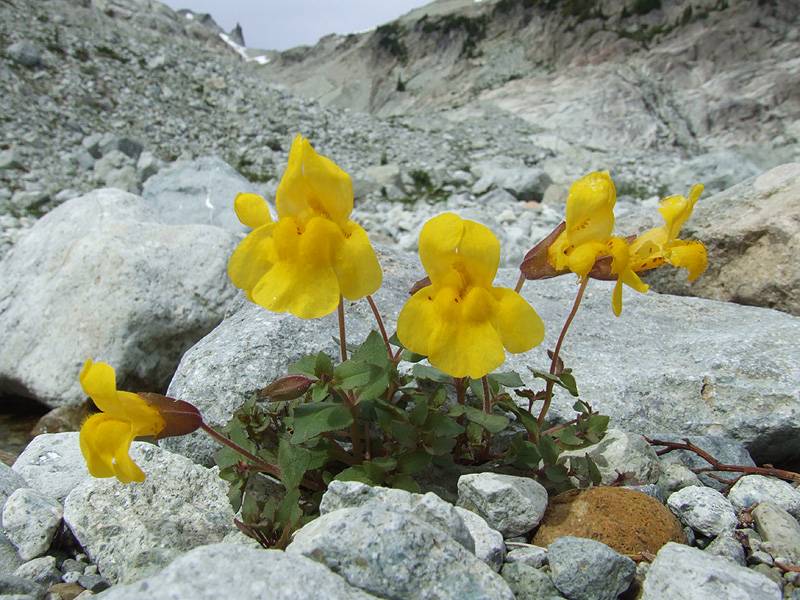Erythranthe tilingii
Erythranthe alsinoides
chickweed monkey-flower, wing-stem monkey-flower
Leaves opposite, mostly sessile, the blade under 2.5 cm. long, elliptic to ovate, slightly reduced upward, with a few irregular teeth, sub-palmately veined.
Opposite, slightly to evidently-toothed, 3-5 prominent veins on the upper surface. The blades are 0.5-2.5 cm. long, with a petiole of more or less equal length.
Flowers few, solitary in the leaf axils, on long pedicels;
calyx 5-toothed, irregular, the upper tooth much the largest, the 2 lower ones tending to fold upward;
corolla large for the size of the plant, 2-4 cm. long, strongly bilabiate, with flaring throat, yellow with maroon dots or splotches on the pubescent lower lip;
stamens 4.
The yellow corollas fuse to form an upper and lower lip (bilabiate), and grow 8-14 mm. long. A conspicuous reddish-brown blotch is found on the lower and sometimes the upper lip. Individual flowers are attached to the stem by a long pedicel.
Capsule.
Capsule.
Erythranthe tilingii
Erythranthe alsinoides
- Local floras:
BC,
CA,
OR
- Local Web sites:
CalFlora,
CalPhotos,
Flora NW,
PNW Herbaria
WildflowerSearch
iNaturalist (observations)
- LBJ Wildflower Center
- SEINet
- Plants of the World Online
- Encyclopedia of Life
- Wikipedia
- Google Image Search
- Local floras:
BC,
CA,
OR,
WA
- Local Web sites:
CalFlora,
CalPhotos,
Flora NW,
PNW Herbaria
WildflowerSearch
iNaturalist (observations)
- LBJ Wildflower Center
- SEINet
- Plants of the World Online
- Encyclopedia of Life
- Wikipedia
- Google Image Search



